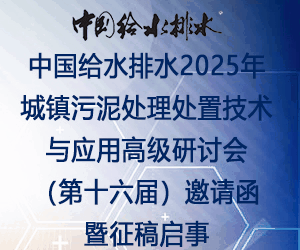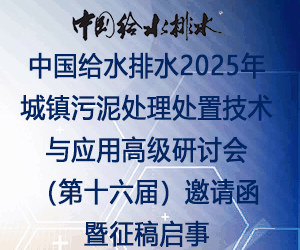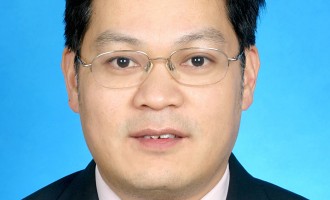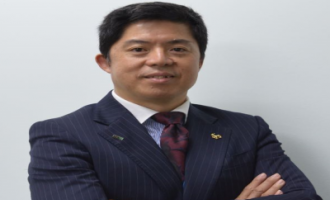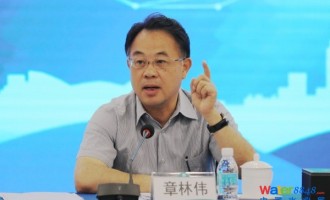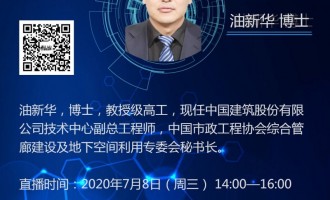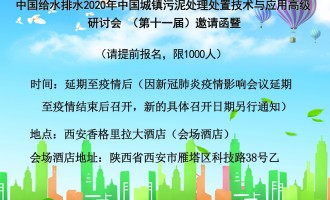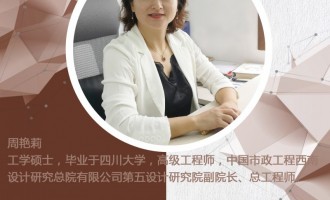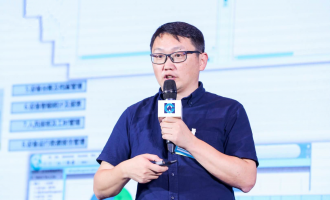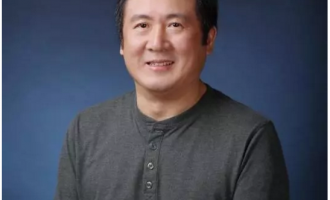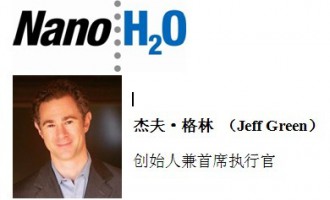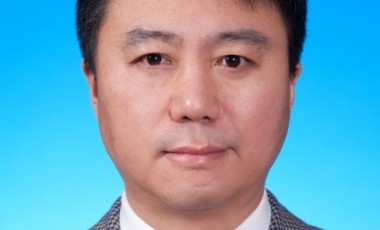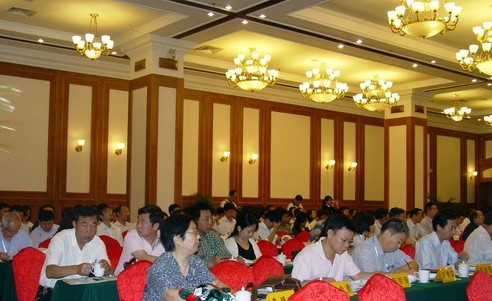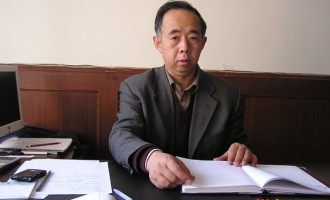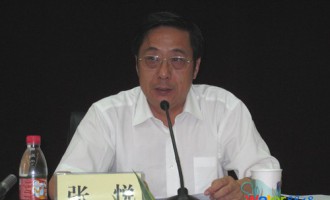1 基本资料姓名:张光明 性别:女 民族: 汉 学历:博士 专业职称:教授 , 博士生导师(人口、资源与环境经济学) 学术荣誉:教育部“新世纪优秀人才支持计划”入选
联系地址:中国人民大学科研楼A座802室环境学院办公室转交,100872
2 教育背景1996.08-2001.08,美国,普渡大学,环境工程学院,环境工程专业,博士学位 1993.09-1996.07,中国,清华大学,环境学院,环境工程专业,硕士学位 1989.09-1993.07,中国,湖南大学,环境科学与工程学院,环境工程专业,学士学位
3 工作经历2011.09-,中国人民大学环境学院环境科学系,教授 2006.3-2011.09,哈尔滨工业大学市政环境工程学院市政工程系,教授 2001.12-2006.3. 清华大学深圳研究生院,讲师,副教授
4 研究兴趣与研究领域高级氧化技术;新型污水资源化技术;污泥减量处理技术。
5 科研项目[20]2010-2012,基于R. Sphaeroides降解有机大分子机理的PNSB污水资源化技术(50978072),国家自然科学基金,课题负责人; [19]2009-2011,重污染水源城市饮用水安全保障共性技术研究与示范(2009ZX07424-006),国家水体污染控制与治理科技重大专项课题,课题主要参与人; [18]2008-2010,高氨氮和高有机物污染河网原水的组合处理技术集成与示范(2008ZX07421-003),国家水体污染控制与治理科技重大专项课题,子课题负责人; [17]2008-2010,高排放标准城市污水处理厂升级改造关键技术研究与工程示范(2008ZX07317-02),国家水体污染控制与治理科技重大专项课题,课题主要参与人; [16]2008.09-2010.09,复杂开放式污水处理系统中光合细菌竞争机制研究(2008QN01),城市水资源与水环境国家重点实验室项目,课题负责人; [15]2006-2010,城市水系统中典型有毒物质环境暴露及复合污染(2008DX01),城市水资源与水环境国家重点实验室重点项目,子课题负责人; [14]2006-2010,城市污水处理厂污泥处理处置节能降耗关键技术(2006BAC19B04),科技支撑项目,子课题负责人; [13]2006-2010,小城镇饮用水水质保障关键技术工艺研究及设备开发,科技支撑项目,子课题负责人; [12]2007-2009,高级氧化-吸附/生物-膜滤多级耦合给水深度处理技术(2007AA06Z339),863项目,2007-2009, 子课题负责人; [11]2007-2008,污泥减量化技术(NCET-06-346),教育部项目,课题负责人; [10]饮用水综合内分泌干扰毒性研究(20070410908),中国博士后基金项目,课题负责人; [9] 饮用水综合内分泌干扰毒性检测技术(LBH-Z07082),黑龙江省博士后基金项目,课题负责人; [8] 2006-2008,梯级催化氧化饮用水深度处理技术(2006AA06Z306),863项目,副组长; [7] 2003-2006,柔性超声波抑藻,南方地区安全饮用水保障技术(2002A601120) ,863重大项目,子课题负责人; [6] 2003-2006,线路板超临界分离,电子废弃物资源化成套技术(2002AA644020),863项目, 子课题负责人; [5] 2002-2004,超声波技术控制富营养化,教育部,课题负责人; [4] 2002-2005,超声波技术在饮用水深度净化中的应用(2002-k1-58),深圳市科技局,课题负责人; [3] 2002-2005,柔性功率超声波在水处理中的应用(2002-k3-134),深圳市科技局,水分项负责人; [2] 2001-2003,Physi-chemical treatment of heavy metal wastewater, Swedish International Development Agency,子课题负责人; [1]1996-2001,Sonochemistry application in environmental engineering, Department of energy,课题主要参与人
6 学术成果6.1 论文[46]Zhang G., Hua I., Cavitation chemistry of polychlorinated biphenyls: decomposition mechanisms and rates, Environ. Sci. Technol., 2000, 34: 1529–1534 (SCI/EI) [45]Zhang G., Hua I., Ultrasonic degradation of trichloroacetonitrile, chloropicrin, bromobenzene: design factors and matrix effects, Advances in Environ. Res., 2000, 4: 211-218 (SCI/EI) [44]Zhang G., Hua I., The impact of particulates on aqueous sonication of bromobenzene, Chemosphere, 2002, 46: 59-66 (SCI/EI) [43]Zhang G., Hua I., Supercritical water oxidation of nitrobenzene, Ind. Eng. Chem. Res., 2003, 42: 285-289 (SCI/EI) [42] Zhang W., Zhang X.,Zhang G., Xu X., Variation of microcystins in a lake for water supply, J. Environ. Sci. Health, Part A, 2003, A38(12):2857-2865 (SCI/EI) [41] Zhang G., Hua I., Chang A., Sonolytic degradation of 2-chlorobiphenyl, J. Cent. South Univ. Technol, 2004, 11(3): 319-321 (SCI/EI) [40]Zhang G., Wang B., Hao H., Wu M., Ultrasonic removal of cyanobacteria, J. Environ. Technol. Manage., 2004, 4: 266-271(EI) [39] Zhang X., Yuan W., Zhang G., Control of nutrients after discharge to lakes through wastewater,Water Sci. Technol., 2004, 50 (6): 173-178 (SCI/EI) [38]Zhang G., Chang A., Wang L., Frequency effects on 2-chlorobiphenyl sonication, Tsinghua Science and Technology, 2004, v9, n2: 181-184 (EI) [37] 张信芳,张敬畅,张光明,张天巧. 苯酚羟基化合成苯二酚反应产物分离过程酚焦油的形成原因,石油化工, 2004, 33(11):1037-1042. (EI) [36] 宗栋良, 张锡辉, 张光明, 自来水厂污泥的流动电流特性, 环境科学, 2004, 25(6):136-139 (EI) [35] 王波, 张光明, 微囊藻毒素在超声场中的降解研究, 环境科学, 2005, 26(6):12-14 (EI) [34]Zhang G., Zhang P., Wang B., Ma B., Ultrasonic and ultrasound-UV degradation of microcystins, J. Harbin Ins. Technol., 2005, 12(S): 99-103 (EI) [33] Guo Z.,Zhang G., Fang J., Dou X., Enhanced chromium recovery from tanning wastewater, J. Clean. Prod., 2006, 14: 75-79. (SCI/EI) [32]Zhang G., Zhang P., Wang B., Liu H., Ultrasonic frequency effects on the removal of Microcystis aeruginosa, Ultrasonics Sonochemistry, 2006, 13: 446-450(SCI/EI) [31]Zhang G., Zhang P., Liu H., Wang B., Ultrasonic damages on cyanobacterial photosynthesis, Ultrasonics Sonochemistry, 2006, 13: 501-505 (SCI/EI) [30]Zhang G., Zhang P., Wang B., Liu H., Removal of algae by sonication-coagulation, J. Environ. Sci. Health, Part A, 2006, 41: 1379-1390 (SCI/EI) [29] Xia Q., Zhang G., Wang L., Study on subchronic toxicity of chlorine dioxide and by-products in water, J. Environ. Sci. Health, Part A, 2006, 41: 1347-1353 (SCI/EI) [28]Zhang G., Zhang P., Chen Y., Ultrasonic enhancement of industrial sludge settling ability and dewatering ability, Tsinghua Sci. Technol., 2006, 11(3): 374-378 (EI) [27] Dong W., Zhang G., Wu M., Zhang X., Elucidate the impact of particulates on aqueous pollutant sonication, J. Harbin Institute of Technology, 2006, 13(2): 196-199 (EI) [26] Zhang P.,Zhang G., Wang W., Ultrasonic treatment of biological sludge: floc disintegration, cell lysis and inactivation, Bioresource Technol., 2007, 98: 207-210 (SCI/EI) [25] Zhang G., Zhang P., Yang J., Chen Y. Ultrasonic reduction of excess sludge from the activated sludge system. J. Hazard Mater., 2007, 145(3): 515–519 (SCI/EI) [24]Zhang G., Zhang P., Gao J., Chen Y., Using acoustic cavitation to improve the bio-activity of activated sludge, Bioresource Technol., 2008, 99: 1497-1502 (SCI/EI) [23]Zhang G., Zhang P., Yang J., Liu H., Energy-efficient sludge sonication: Power and sludge characteristics, Bioresource Technol., 2008, 99: 9029-9031 (SCI/EI) [22] Zhang P., Zeng G., Zhang G., Li Y., Zhang B., Fan M. Anaerobic co-digestion of biosolids and organic fraction of municipal solid waste by sequencing batch process. Fuel Process. Technol., 2008, 89(4): 485-489. (SCI/EI) [21]Zhang G., Zhang P., Comparison of different methods for sludge lysis, Res. J. Chem. Environ., 2008, 12(3): 12-17 (SCI) [20]Zhang G., Liu H., Zhang P., Zhang Y., Ultrasonic pre-treatment of biosolid, Inter. J. Biotechnology, 2008, 10(1): 26-35 (EI) [19] Li W., Zhang G., Zhang P., Liu H., Waste activated sludge reduction using sonication and cryptic growth, Inter. J. Biotechnology, 2008, 10(1): 64-72 (EI) [18] Zhang P., Zhang G., Zeng G., Hu E., Zou S., Wu H., Influence of Fe(II) addition on heavy metal bioleaching from sewage sludge with mixed inocula, Inter. J. Biotechnology, 2008, 10(1): 16-25 (EI) [17]Zhang G., Zhang P, Fan M, Ultrasound-enhanced coagulation for Microcystis aeruginosa removal,Ultrasonics Sonochemistry, 2009, 16: 334-338 (SCI/EI) [16] Zhang P, Zhu Y, Zhang G., Sewage sludge bioleaching by indigenous sulfur-oxidizing bacteria: Effects of ratio of substrate dosage to solid content, Bioresource Technol., 2009,100(3): 1394-1398 (SCI/EI) [15] Zhang G., Yang J., Liu H., Zhang J. Sludge ozonation: disintegration, supernatant changes and mechanisms, Bioresource Technol., 2009, 100(3): 1505-1509 (SCI/EI) [14]Zhang G., He J. Zhang P., Zhang J. Ultrasonic reduction of excess sludge from activated sludge system II: urban sewage treatment, J. Hazard Mater., 2009, 164: 1105-1109. (SCI/EI) [13] Zhang G., Wei X., Li X., Zhang J., Dou Z. Sonication for advanced drinking water treatment, J. Harbin Ins. Technol., 2009: 16(1) 99-103 (EI) [12] Zhang G., Zhang P., Kang X., Gao F., Ultrasonic lysis of biological sludge: A three-stage process, J. Res. Sci. Technol., 2009, 6: 163-168. (SCI/EI) [11] Lu H., Zhang G., Dai X., He C., Photosynthetic bacteria treatment of synthetic soybean wastewater: direct degradation of macromolecules, Bioresource Technol., 2010, 101: 7672-7674. (SCI/EI) [10] He J., Wan T, Zhang G.,Zhang J., Ultrasonic reduction of excess sludge from activated sludge system: energy efficiency improvement via operation optimization, Ultrasonics Sonochemistry, 2010, 18: 99-103. (SCI/EI) [9] Madukasi E., Zhang G., Microaerobic bioremediation of high organic load wastewater by phototrophic bacteria, Afr. J. Biotechnol., 2010, 9(25): 3852-3860. (SCI) [8] Zhang P.,Zhang G., Inorganics accumulation in low-sludge wastewater treatment technique: case study of SBR with sonication, Res. J. Chem. Environ., 2010, 14(2): 68-71. (SCI) [7] He J., Zhang G., Lu H., Treatment of soybean wastewater by a wild strain Rhodobacter sphaeroides and to produce protein under natural conditions, Front. Environ. Sci. Engr. China 2010, 4(3): ***. (SCI) [6] Lang L., Zhang G., Li Y., The combination of 17-Estradiol and Bisphenol A weaken their respective action, Advanced Materials Research, 2010, 113-114, 2220-2223 [5] Zhao W., He C., Zhang G., Culture medium optimization for photosynthetic bacteria,Advanced Materials Research, 2010, 113-116, 1443-1446 [4] Madukasi E., Zhang G., A two bioreactor treating Brewery wastewater, Advanced Materials Research, 2010, 113-114, 1138-1140. [3] 戴晓,张光明,光合细菌(Z08)啤酒废水资源化研究,哈尔滨工业大学学报,2010, 25(6), 937-940. [2] 卢海凤,张光明,何春华,一株光合细菌的鉴定及其处理大豆加工废水试验研究,哈尔滨工业大学学报,accepted. [1]赵薇,张光明,赵志伟,HPLC法定量分析水中光合细菌菌体含量,哈尔滨工业大学学报,accepted. 6.2 著作[5] Zhang G., The application of sonochemistry and supercritical water oxidation to environmental engineering[D], Michigan: UMI Publisher, 2001; [4] 张光明,常爱敏,张盼月,超声波水处理技术[M],北京:建筑工业出版社,2006; [3] 张光明,张信芳,张盼月,城市污泥资源化技术进展[M],北京:化学工程出版社,2006; [2] 张光明,张宝杰,张盼月,成为合格的科学家[M],北京:高等教育出版社,2007; [1] 张光明,张盼月,张信芳,水处理高级氧化技术[M],哈尔滨:哈尔滨工业大学出版社,2007 6.3专利[9] 张光明,豆子波,杨晶. 利用超声波强化混凝的处理装置[P].中国发明专利,200910072349.5. 2009-12-23; [8]张光明,何春华.一种光合细菌培养基[P].中国发明专利,200810137444.4, 2009-4-15; [7] 张光明,何春华. 一种光合细菌的培养方法[P].中国发明专利,200810137445.9,2009-4-15; [6] 张光明,王波,吴敏生,张锡辉.用超声波快速去除水厂原水中藻类的方法[P]. 中国发明专利,ZL200310117710.4, CN1325399C,2004-12-22; [5] 张光明,吴敏生,马伯志,王波,张锡辉.利用紫外光辐照抑制水中蓝藻生长的方法及系统[P]. 中国发明专利,ZL200410051559.3,CN1297493C,2005-3-2; [4] 张光明,张盼月,马伯志,吴敏生. 超声波高浓度有机废水处理技术与设备[P], 中国发明专利,CN1270979C, ZL200410027516.1,2005-02-23; [3]张光明,王波,毕海. 去除水厂或二次供水水塔中藻毒素的方法及系统[P],中国发明专利,ZL200510033420.0,CN1330585,2005-09-28; [2] 张光明.家用净水设备[P],中国发明专利,ZL200510102394,2006-7-19; [1] 张光明.家用超声-活性炭分质净水设备[P],中国发明专利,ZL200310112508.2,2004-11-17 6.4会议论文[4] Zhang G., Hua I. Sonolysis degradation of PCBs. 215 ACS Conference. Texas: American Chemical Society. 1998; [3] Hua I.,Zhang G.,Cavitation chemistry of PCBs. 217 ACS Conference. California: American Chemical Society. 1999; [2] Zhang G., Zhang X., Fang J., Guo Z. Enhanced chemical precipitation of tanning wastewater.1th international conference on energy and environment. Changsha: Hunan University.2003.10.11-14; [1]Zhang G., Lang L, Yu Li, Use human breast cancer cells to examine change of estrogenicity in drinking water treatment process. 4th International Conference on Bioinformatics and Biomedical Engineering. Chengdu: Sichuan University and IEEE Biomedical Engineering Society.2010.6.18-20 7 社会职务2009-(印度),Research Journal of Chemistry and Environment,编委;
8 奖励与荣誉称号[3] 2006,教育部,“新世纪优秀人才支持计划”入选; [2] 2008,黑龙江省,科技进步一等奖; [1] 2010,霍英东教育基金会高等院校青年教师奖,三等奖
|
张光明,女,现任中国人民大学环境学院环境科学系教授、博士生导师,于2006年入选教育部“新世纪优秀人才支持计划”。分别于1993年和1996年在湖南大学和清华大学获学士和硕士学位,并在1996年去美国普渡大学环境工程学院进修,在2001年获得博士学位。在2001年到2006年期间,在清华深圳研究院担任副教授;在2006年和2011年期间于哈尔滨工业大学市政环境工程学院市政工程系担任教授;在2011年至今,于中国人民大学环境学院环境科学系担任教授。研究兴趣和研究领域主要包括高级氧化技术、新型污水资源化技术和污泥减量处理技术。主持与参加了国家自然科学基金、中央高校基本科研业务费专项资金、863项目、国家水体污染控制与治理科技重大专项课题“高氨氮和高有机物污染河网原水的组合处理技术集成与示范”等多项研究。曾在Bioresource Technology, Environ. Sci. Tech.,Desalination Water Treatment等期刊上发表多篇学术论文。同时,还编辑了《超声波水处理技术》、《城市污泥资源化技术进展》、《成为合格的科学家》和《水处理高级氧化技术》等著作。


